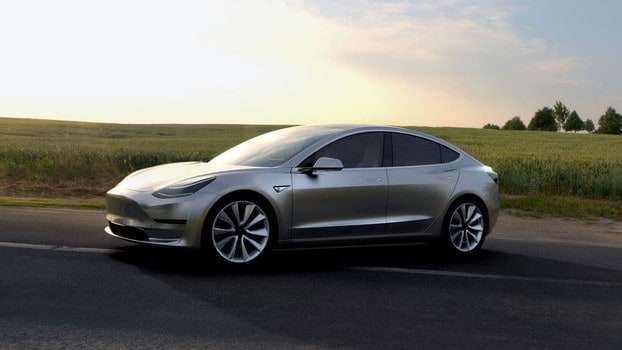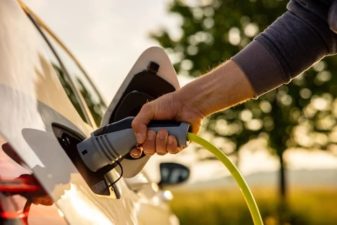This article was originally published on Fool.com. All figures quoted in US dollars unless otherwise stated.
Tesla Inc (NASDAQ: TSLA) has set its sights on building an affordable car with a $25,000 starting price -- again. At the company's Battery Day last month, Tesla announced a slew of innovations designed to reduce battery production costs by up to 56% while also increasing range and power. As my Foolish colleague noted at the time, a new "tabless" cell design was the biggest breakthrough, but Tesla also discussed changes to the cells' form factor, battery chemistry, and manufacturing process, among other things.
Working to bring down prices is the right strategic focus for Tesla. However, its stated goal of offering a $25,000 car within three years seems far-fetched. Additionally, with better, cheaper batteries on the way, it will be increasingly difficult for Tesla to meet its volume growth goals over the next few years.
Can it be done profitably?
There are two facets to the first major challenge Tesla faces. The first relates to whether it will be able to reduce costs enough to earn a reasonable profit on a $25,000 car. After all, when Tesla ramped up deliveries of the cheaper (sub-$40,000) Model 3 variants last spring, its gross margin plunged to 18.9% in Q2 2019 -- and closer to 17% excluding regulatory credits -- down from around 25% in the second half of 2018. It quickly made the $35,000 standard-range Model 3 an "off-menu" option to push buyers to pricier versions that it could produce profitably.
The cheapest version of the Model 3 available on Tesla's website is the "standard range plus" option, which has a starting price of $37,990. This variant has a 54-kWh battery. Third-party sources have put Tesla's 2019 battery costs between $127 per kWh and $158 per kWh. Even at the high end of that range, the battery for a standard range plus Tesla 3 would cost less than $9,000.
Thus, even if Tesla succeeds in all of its cost-reduction objectives related to batteries, the savings might be on the order of $5,000. That alone wouldn't get Tesla close to being able to make a $25,000 car profitably.
The second issue relates to timing. Tesla did not bring a prototype of its new battery design to the Battery Day event. This raises questions about how far along it is in the development process, which requires solving some tricky problems. Moreover, Musk has frequently talked about how difficult it is to scale up manufacturing of new technologies, relative to just building a prototype.
This makes it unlikely that a $25,000 vehicle could be available in as little as three years. Another reason to take this projection with a grain of salt? CEO Elon Musk said more than two years ago that a $25,000 Tesla could come to market in about three years (i.e. 2021). That obviously isn't happening.
Getting from here to there
Another big challenge for Tesla is driving sales of its current products before the new battery technology becomes available. Musk has previously talked about targeting 50% annual growth in vehicle deliveries. At that pace, Tesla would deliver over 1.2 million vehicles in 2022 and more than 1.8 million vehicles in 2023.
Achieving that level of growth would be difficult under any circumstances. It requires moving well beyond the early adopters and enthusiasts. Additionally, there appears to be only one high-volume product on the way to help Tesla reach these numbers (the Cybertruck).
This task will be complicated if people believe that Tesla will soon have vehicles on the market offering 50% or more additional range at significantly lower prices. Whereas early Model 3 buyers have seen their cars depreciate very little over the past few years, future buyers won't be so lucky if Tesla puts new products that are better and cheaper on the market by 2025.
Of course, this isn't to say that Tesla shouldn't pursue advancements that will eventually reduce battery costs and improve performance. It is much better to disrupt your existing products than to wait for a competitor to do so. But investors shouldn't ignore the impact of this coming disruption to Tesla's products and pricing, either.
Tesla is on the right track
All in all, Tesla's Battery Day presentation showed that the company is focused on the right goal: driving down costs to make its vehicles more affordable. Tesla wouldn't be able to meet its long-term growth goals or fulfill its mission "to accelerate the world's transition to sustainable energy" with its current product portfolio.
Furthermore, while Tesla has plenty of work to do to achieve the specific target of a $25,000 car, it has a more credible game plan for reducing costs than it did when Musk talked about this goal back in 2018.
However, while Tesla appears to be on the right track, it's not clear how far down the track -- and thus, how far ahead of competitors -- the electric vehicle pioneer is right now. As a result, I would be wary of investing in Tesla at its premium valuation of more than $400 billion.
This article was originally published on Fool.com. All figures quoted in US dollars unless otherwise stated.









